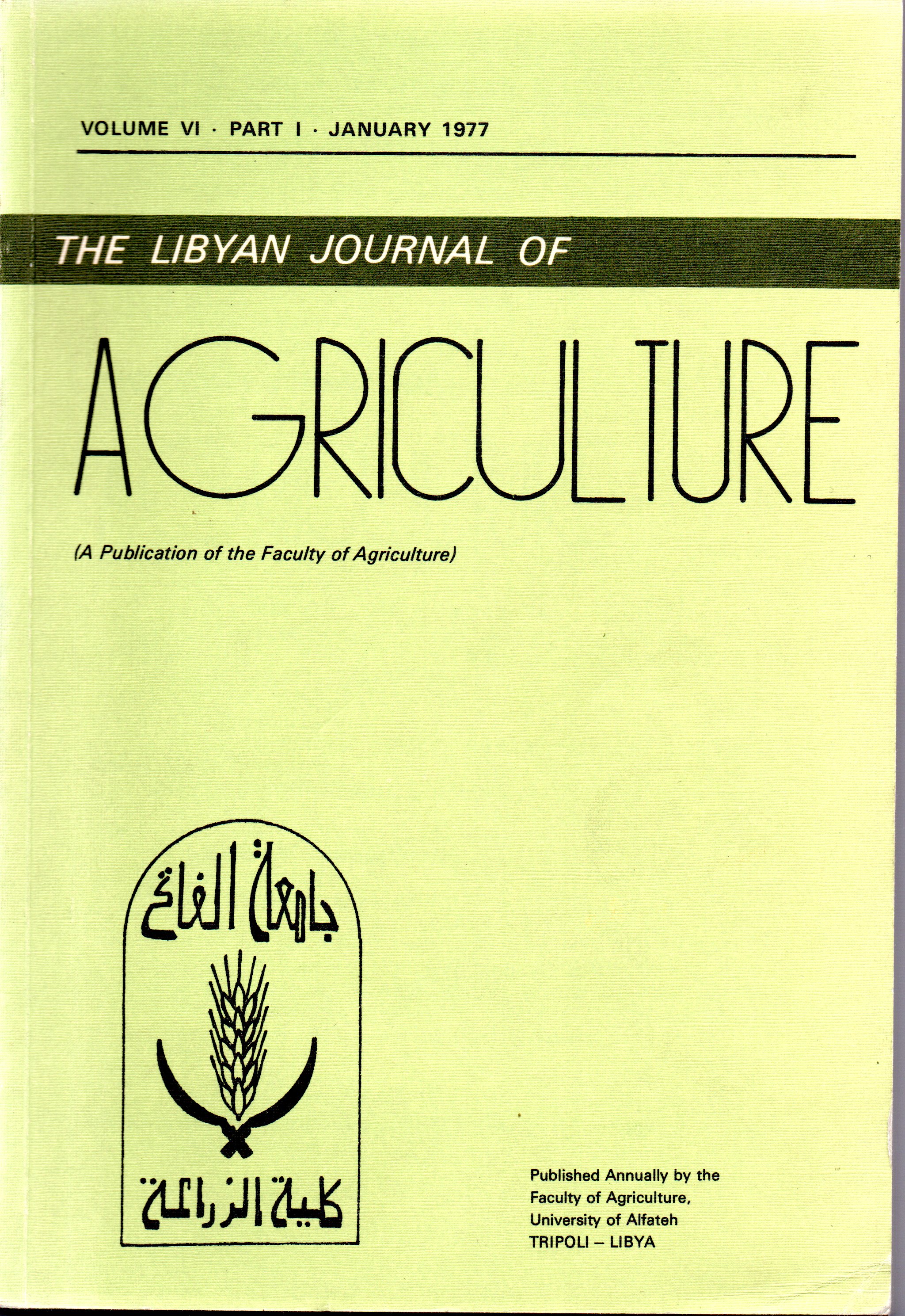Effect of Phosphorus and Potassium Fertilization on Yield of Two Potato Cultivars
محتوى المقالة الرئيسي
الملخص
A field plot experiment was conducted in the experimental farm of the Faculty of Agriculture, Alfateh University in T ripoli to study the effect of four levels of phosphorus application (0, 50, 100 and 150 Kg P2O-/ha) and four levels of potassium application (0, 80, 160 and 240 Kg K,O/ha) on yield of tubers in the potato cultivars Kenvaand Arran Banner, during the spring season 1975 and the fall season 1975-76. The results have shown that potassium application at the rate of 80 Kg/ha K.,O gave significant increase in yield of tubers in both cultivars. Higher levels of potassium application generally reduced the yield of tubers. The response of yield to potassium application was manifested in both number of tubers per plant and average weight of tuber.
Phosphorus application resulted in increases in yield of tubers. The response to phosphorus application was more significant in the fall planting than in the spring planting for both cultivars. Tuber weight showed gradual increase with increasing phosphorus application up to 100 Kg/ha of P2O.-„ but increasing P above that level in the spring planting showed slight decrease in weight of tubers in both cultivars.
Since the results have shown that applying high levels of potassium fertilizer had a deleterious effect on the yield, only low levels of potassium should be recommended for potato fertilization in soils of the same chemical and physical structure as the soil in the Tripoli area.

